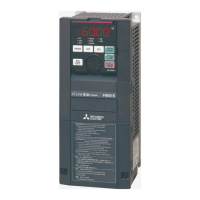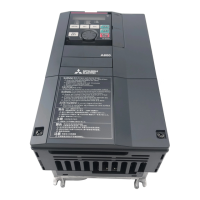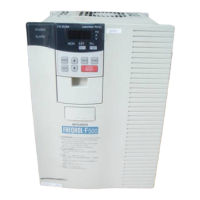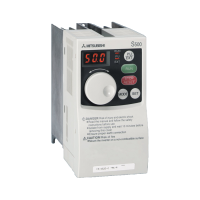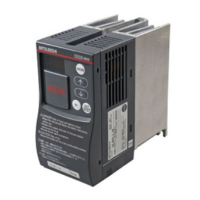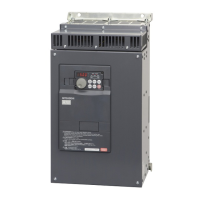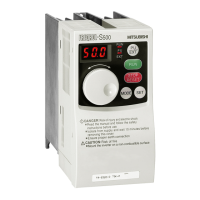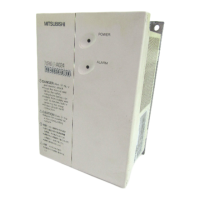PROTECTIVE FUNCTIONS
176
5.2.3 Speed greatly differs from the setting
Check that the fre
uenc
settin
si
nal is correct.
Measure the in
ut si
nal
level.)
Check that the following parameter settings are correct (Pr. 1, Pr. 2, Pr. 19,
Pr. 38, Pr. 39, Pr. 245, Pr. 902 to Pr. 905).
Check that the in
ut si
nal lines are not affected b
external noise.
Use
shielded cables)
Check that the load is not too heavy.
5.2.4 Acceleration/deceleration is not smooth
Check that the acceleration and deceleration time settings are not too short.
Check that the load is not too heavy.
Check that the tor
ue boost settin
is not too lar
e to activate the stall
prevention function.
5.2.5 Motor current is large
Check that the load is not too heavy.
Check that the torque boost setting is not too large.
5.2.6 Speed does not increase
Check that the maximum frequency setting is correct.
Check that the load is not too heav
.
In a
itators, etc., load ma
become
heavier in winter.)
Check that the tor
ue boost settin
is not too lar
e to activate the stall
prevention function.
Check that the brake resistor is not connected to terminals P (
+
) - P1
accidentally.
5.2.7 Speed varies during operation
When sli
com
ensation is selected, the out
ut fre
uenc
varies with load
fluctuation between 0 and 2Hz. This is a normal operation and is not a fault.
1) Inspection of load
Check that the load is not varying.
2) Inspection of input signal
Check that the frequency setting signal is not varying.
Check that the frequency setting signal is not affected by noise.
Check that a malfunction does not occur due to an undesirable current when
the transistor output unit is connected, for example. (Refer to page 23.)
3) Others
Check that the settin
of the a
lied motor ca
acit
Pr. 80
is correct for
the inverter capacities in general-purpose magnetic flux vector control.
Check that the wirin
len
th is within 30m
98.42 feet
in
eneral-
ur
ose
magnetic flux vector control.
Check that the wiring length is correct in V/F control.
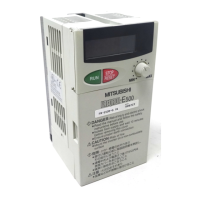
